Ficus sabre plants are admired for their lush foliage and elegant form, making them a stunning addition to any indoor space. These tropical plants come in various popular varieties, each with its own unique appearance.
Weeping Fig (Ficus benjamina)
The Weeping Fig features small, glossy, deep-green leaves that cascade elegantly from its branches. It has a dense and compact growth habit, making it a popular choice for indoor spaces.
Saber-leaf Fig (Ficus maclellandii ‘Alii’)
The Saber-leaf Fig, also known as the Alii Fig, is characterized by its long, narrow leaves with a sword-like shape. The leaves are slightly twisted and have a glossy, dark-green color, adding a touch of elegance to any room.
Fiddle-leaf Fig (Ficus lyrata)
The Fiddle-leaf Fig is known for its large, violin-shaped leaves with prominent veining. These leaves have a leathery texture and a deep-green color, creating a bold statement in any space.
Rubber Tree (Ficus elastica)
The Rubber Tree features large, leathery leaves that are typically dark green, but some varieties may have variegated patterns. Its upright growth habit and glossy foliage make it a popular choice for those looking for a statement plant.
How To Grow Ficus sabre Plants
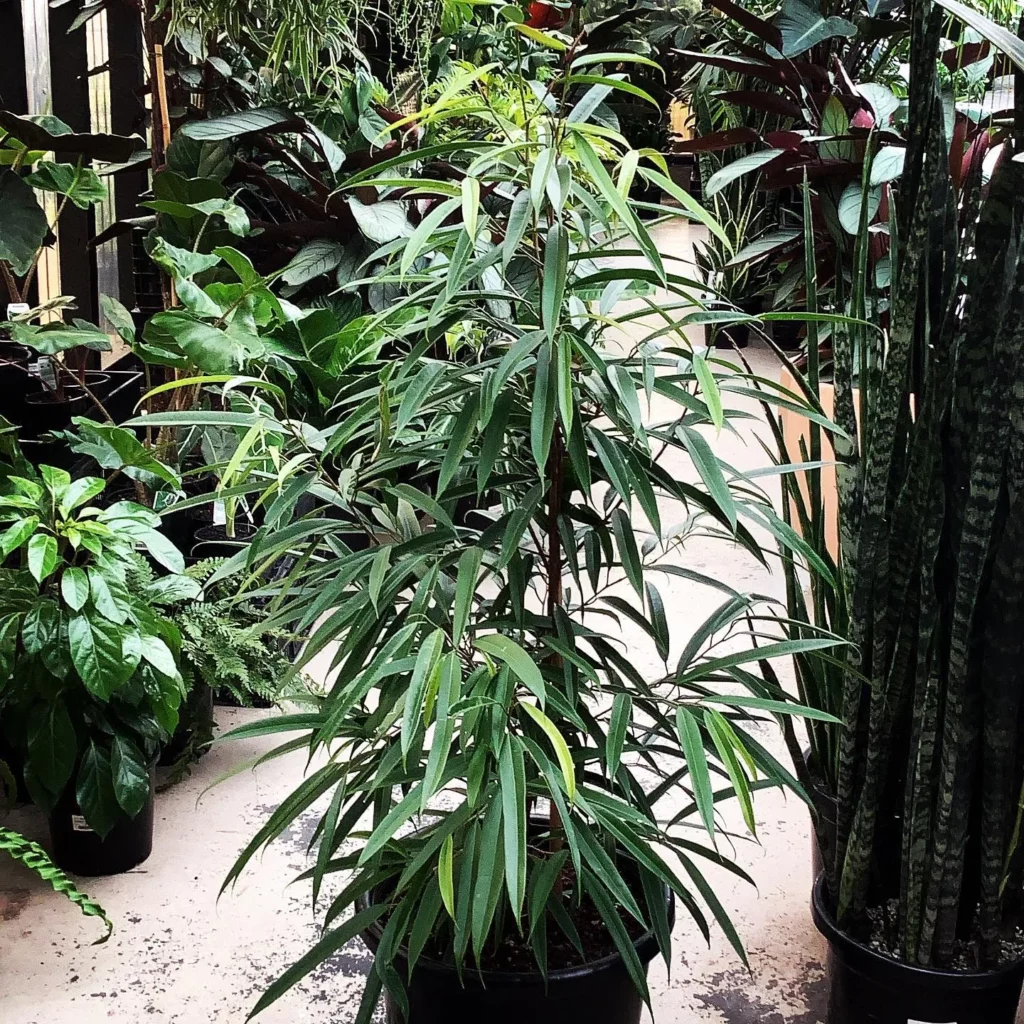
Growing Ficus sabre plants is a rewarding experience, and with the right care, you can enjoy vibrant and healthy growth in your home.
Ficus sabre, also known as Ficus benjamina, Ficus maclellandii ‘Alii’, Ficus lyrata, and Ficus elastica, are popular houseplants that require minimal maintenance if their basic needs are met.
Here are some essential tips to help you successfully grow Ficus sabre plants:
Light: Ficus sabre plants prefer bright to moderate light. Place them in a location where they can receive indirect sunlight, such as near an east-facing window. Rotate the plant weekly to ensure even growth.
Water: It is crucial to maintain proper watering practices for Ficus sabre plants. Allow the top 1-2 inches of soil to dry before watering thoroughly.
Avoid overwatering and waterlogging the soil, as it can lead to root rot. Repot the plant if waterlogging becomes a problem.
Fertilizer: During the active growth period in late spring and summer, fertilize your Ficus sabre plants with a liquid feed or apply slow-release granular fertilizer like Osmocote. Diluted fertilizer can be used monthly for Ficus lyrata.
Always follow the instructions on the fertilizer packaging for proper application and dosage.
Temperature: Ficus sabre plants thrive in temperatures between 55°F and 85°F (13°C and 29°C). Avoid exposing them to extreme temperature fluctuations and drafts, as they are sensitive to cold and hot air currents.
Repotting & Pruning: Ficus plants do not mind being relatively pot-bound. Only repot when necessary, such as when it becomes difficult to water the plant due to restricted root growth.
Check and loosen any coiled roots during the repotting process. Prune regularly in early spring to maintain the desired size and shape of the plant.
Pests: Common pests that may affect Ficus sabre plants include mealybugs, scale insects, and spider mites. Regularly inspect your plants for any signs of infestations.
Treat any pest problems promptly with appropriate houseplant-safe pesticides to prevent further damage.
Propagation Tips for Ficus sabre Plants
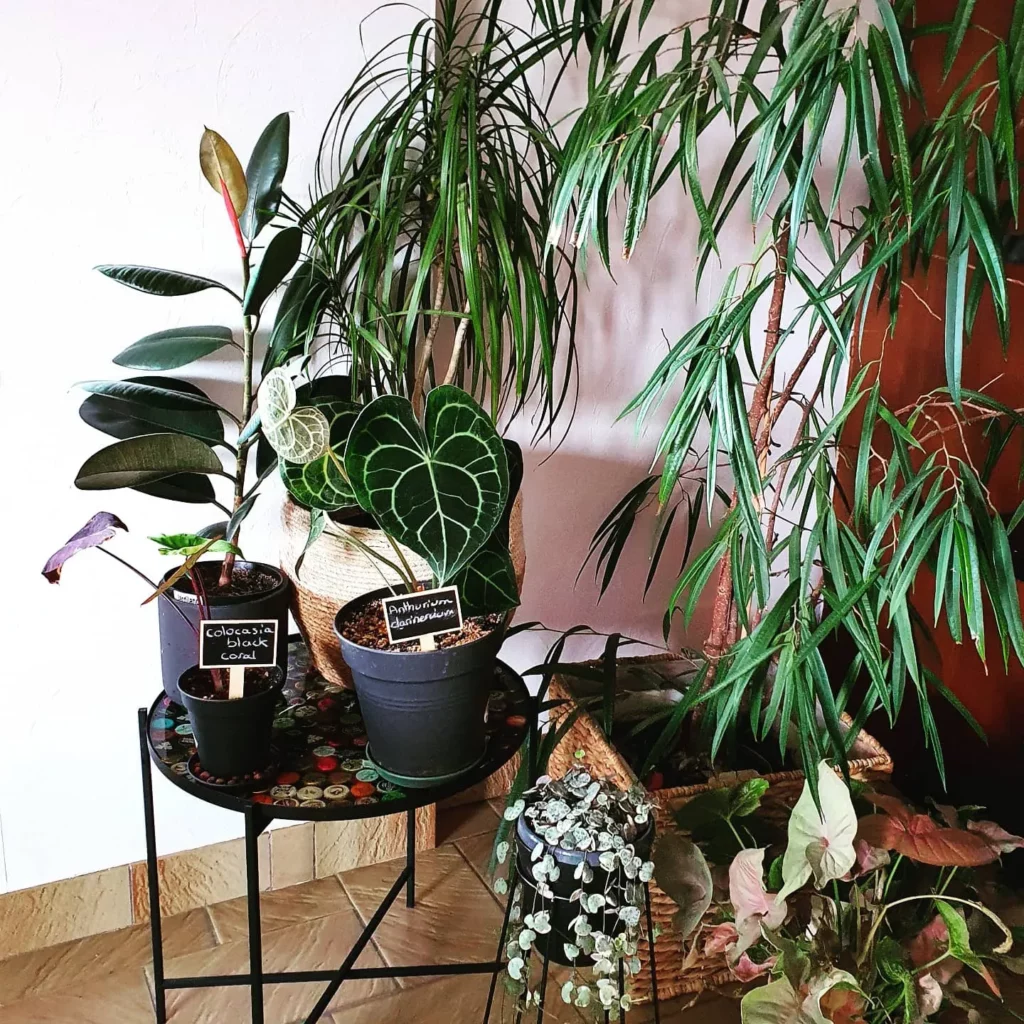
If you want to expand your collection of Ficus sabre plants or share their beauty with others, propagation is an excellent way to do so.
Propagating these plants can be done through various methods such as stem cuttings or air layering. Here are some propagation tips to get you started:
Stem Cuttings:
1. Select a healthy stem from the parent plant that is around 6-8 inches long.
2. Cut the stem just below a leaf node using a clean, sharp knife or pruning shears.
3. Remove the lower leaves from the cutting, leaving a few at the tip.
4. Dip the cut end of the stem in a rooting hormone powder to promote root growth.
5. Plant the cutting in a well-draining potting mix, making sure to bury at least 2-3 nodes in the soil.
6. Place the pot in a warm and brightly lit area, but avoid direct sunlight.
7. Keep the soil consistently moist, but not waterlogged, until roots develop in 4-8 weeks.
8. Once roots have formed, gradually acclimate the new plant to its growing conditions.
9. Transplant the rooted cutting into a larger pot or the desired growing location.
Air Layering:
1. Select a healthy stem from the parent plant that is about pencil thickness.
2. Make a small upward cut halfway through the stem, about a foot below the tip.
3. Dust the cut section with rooting hormone powder to encourage root development.
4. Wrap the cut section with moist sphagnum moss, ensuring it stays in place.
5. Cover the moss with plastic wrap to create a humid environment for root growth.
6. Secure the plastic wrap with tape or a rubber band to keep it in place.
7. Monitor the moisture of the moss and mist it occasionally to keep it moist.
8. After 4-8 weeks, roots should begin to form. Carefully cut the stem below the roots.
9. Plant the rooted stem in a well-draining potting mix and provide proper care.
| Propagation Method | Advantages | Disadvantages |
|---|---|---|
| Stem Cuttings | Easy to do and high success rate | May take longer for roots to develop |
| Air Layering | Faster root development | Requires more time and materials |
Quick Care Overview for Ficus sabre Plants
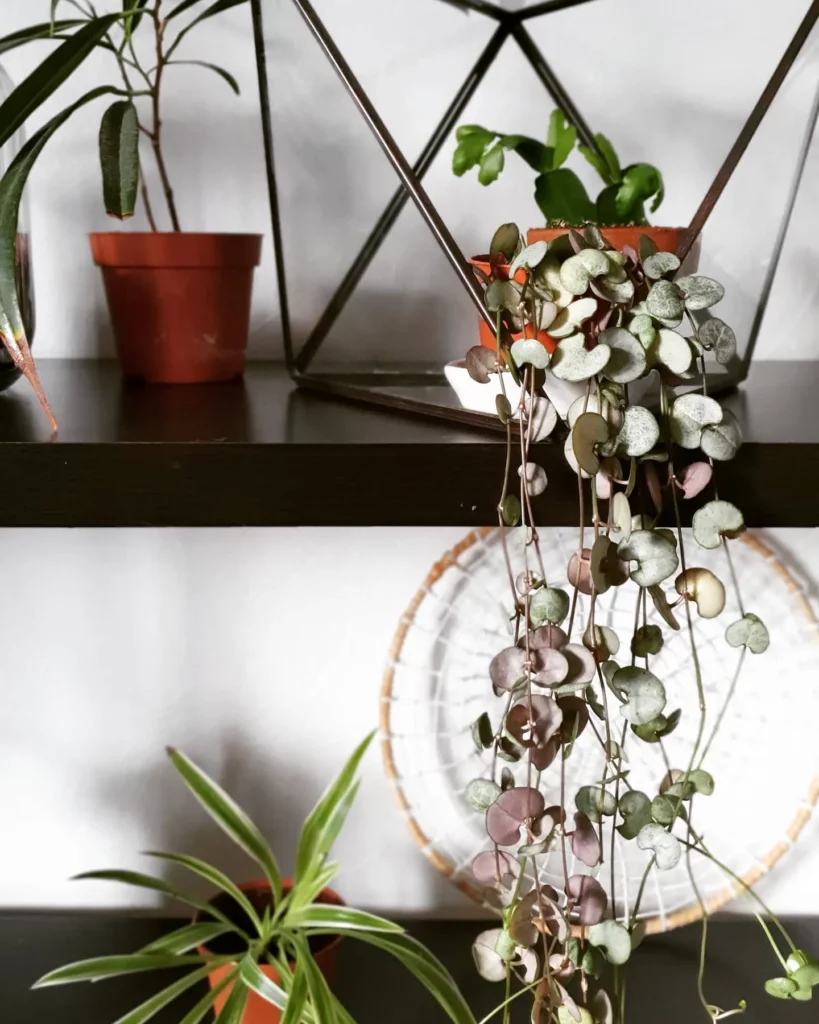
To ensure your Ficus sabre plants thrive, here is a quick overview of their care requirements:
Specific care requirements may vary depending on the Ficus sabre variety:
| Ficus Variety | Light Requirements | Watering |
|---|---|---|
| Weeping Fig (Ficus benjamina) | Bright light, allow soil to dry between waterings | Water when top 1-2 inches of soil is dry, avoid overwatering |
| Saber-leaf Fig (Ficus maclellandii ‘Alii’) | Bright to moderate light | Water when top 1-2 inches of soil is dry, avoid overwatering |
| Fiddle-leaf Fig (Ficus lyrata) | Bright light to some direct sun | Avoid overwatering, water when top 1-2 inches of soil is dry |
| Rubber Tree (Ficus elastica) | Bright to moderate-low light | Avoid overwatering, stake stem to keep it upright |
Light Requirements for Ficus sabre Plants
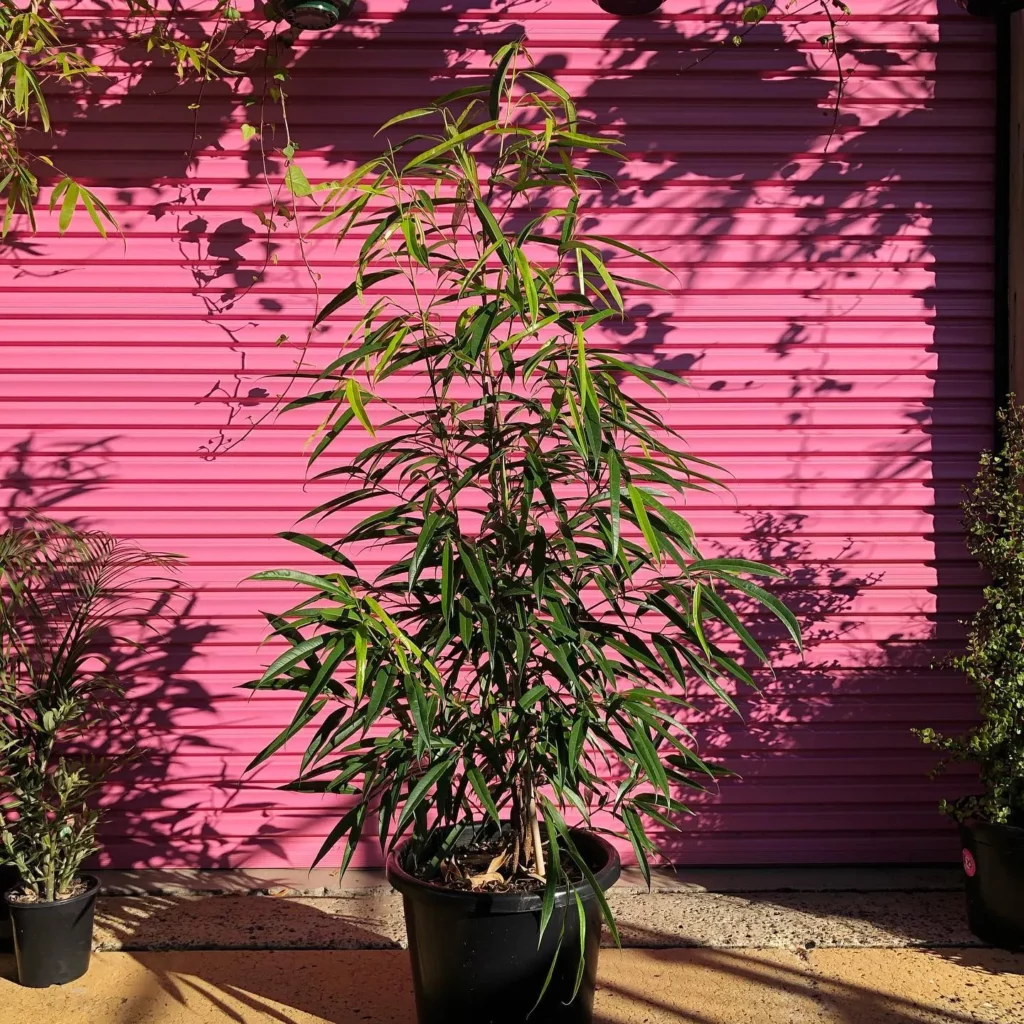
Providing the right amount of light is crucial for the health and growth of Ficus sabre plants. These tropical houseplants thrive in bright to moderate light conditions, but direct sunlight should be avoided as it can scorch their delicate leaves.
Proper placement in the home is essential to ensure optimal light exposure. Ficus Alii plants, for example, prefer an eastern-facing window or a few feet removed from a southern or western-facing window.
Regularly rotating the plant will also help promote even growth.
Ficus sabre plants can adapt to different light levels, but they prefer bright indirect light. Placing them in an area where they receive filtered sunlight or artificial light with the right intensity will help them thrive.
It’s important to avoid placing Ficus sabre plants next to air conditioning or heating vents, as they are sensitive to hot and cold drafts.
When it comes to Ficus sabre light requirements, it’s crucial to strike a balance. Insufficient light can result in weak and leggy growth, while excessive light can lead to sunburn and leaf damage.
Monitoring the plant’s response to light conditions and making adjustments accordingly is key to maintaining their health and vitality.
Ficus sabre Light Requirements
| Light Conditions | Suitable for |
|---|---|
| Bright Indirect Light | All Ficus sabre varieties |
| Filtered Sunlight | All Ficus sabre varieties |
| Artificial Light | All Ficus sabre varieties |
| Direct Sunlight | Avoid for all Ficus sabre varieties |
Soil Requirements for Ficus sabre Plants
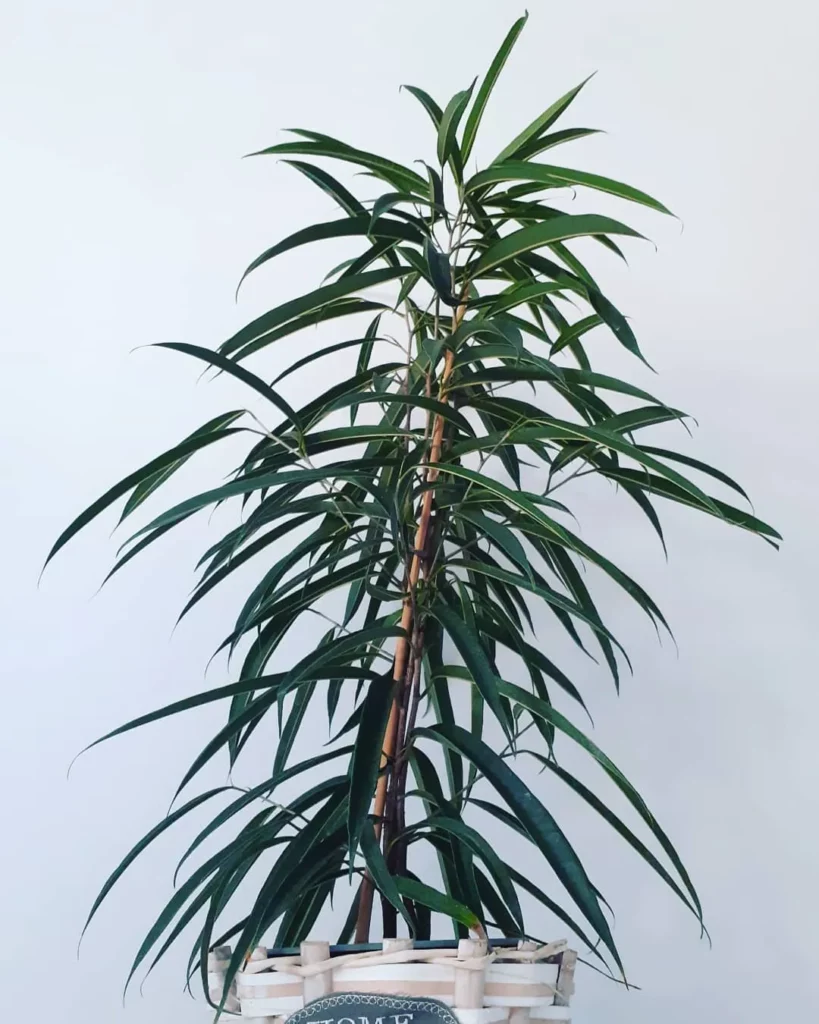
Choosing the right soil for your Ficus sabre plants is essential to ensure proper nutrient uptake and prevent waterlogging. These tropical houseplants thrive in well-draining soil that retains moisture without becoming waterlogged.
Here are some key considerations when it comes to soil requirements for Ficus sabre plants:
- Type of Soil: Ficus sabre plants prefer a loose, well-draining soil mix that is rich in organic matter. A recommended soil mix consists of equal parts of peat moss, perlite, and potting soil.
- Drainage: Good drainage is crucial to prevent water accumulation, which can lead to root rot. Ensure that the pot has drainage holes to allow excess water to escape.
- pH Level: Ficus sabre plants prefer slightly acidic to neutral soil with a pH range between 6 and 7. Regular monitoring of the soil pH and adjusting if necessary is important for their optimal growth.
Potting and Repotting Ficus sabre Plants
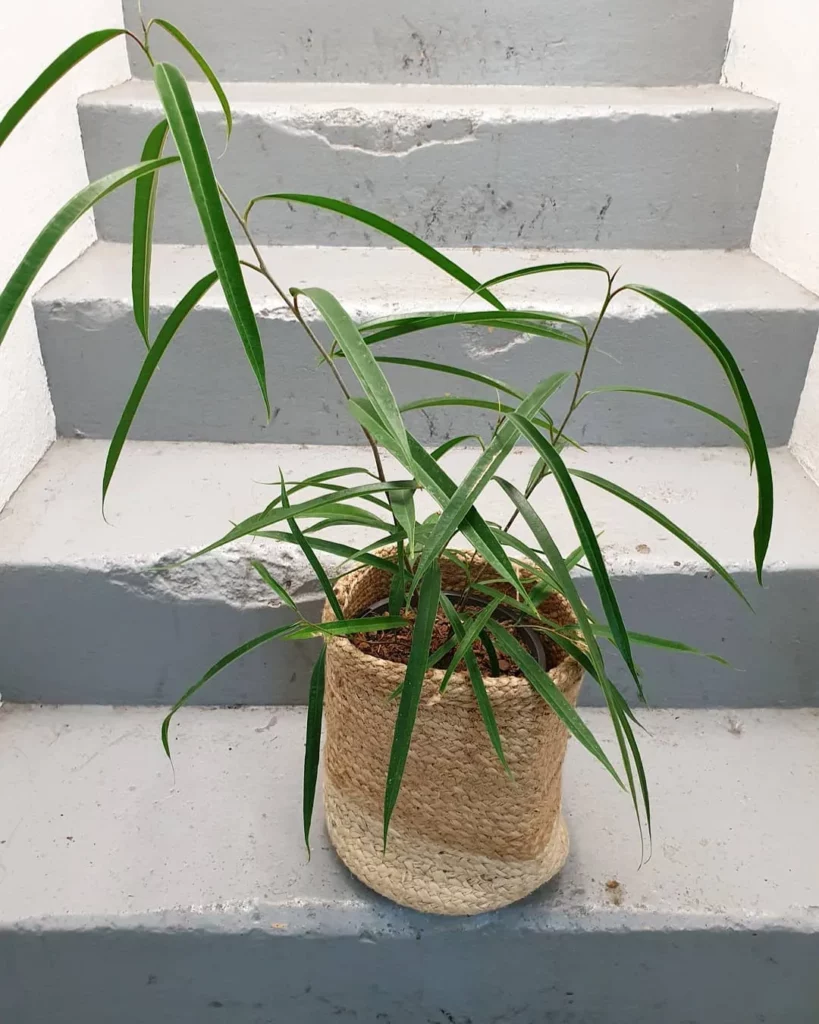
When it comes to potting and repotting Ficus sabre plants, following the right techniques will ensure their root health and overall growth. These plants are relatively forgiving when it comes to pot size, as they do not mind being pot-bound to some extent.
However, if you notice that the plant has outgrown its current pot or the soil is not draining properly, it may be time for repotting.
| Potting Technique | Repotting Technique |
|---|---|
| 1. Gently remove the plant from its current pot, taking care not to damage the roots. | 1. Carefully remove the plant from its current pot, gently separating the roots from the soil. |
| 2. Examine the roots and trim any that are damaged or excessively long. | 2. Inspect the roots for any signs of rot or damage. Trim away any affected roots using clean, sharp scissors or shears. |
| 3. Place a layer of potting mix at the bottom of the new pot. | 3. Add a layer of fresh potting mix to the bottom of the new pot. |
| 4. Gently place the plant in the pot, ensuring that it is centered and upright. | 4. Position the plant in the new pot, making sure it is centered and upright. |
| 5. Fill the remaining space around the plant with the potting mix, gently firming it down to secure the plant. | 5. Fill the remaining space around the plant with fresh potting mix, ensuring that the roots are well-covered. |
| 6. Water the plant thoroughly until water drains out from the bottom of the pot. | 6. Water the plant thoroughly, allowing the excess water to drain out from the bottom of the pot. |
Pruning and Shaping Ficus sabre Plants

Pruning Ficus sabre plants is vital to maintain their desired size and shape and promote healthy growth. Regular pruning helps control their height and width, making them suitable for indoor spaces.
Here are some tips to help you prune and shape your Ficus sabre plants:
- Use clean, sharp pruning shears or scissors to avoid damaging the plant.
- Start by removing any dead, damaged, or yellowing leaves. This improves the overall appearance of the plant and prevents the spread of diseases.
- Thin out dense areas by selectively cutting back branches that are crossing or rubbing against each other. This allows light and air to reach the inner parts of the plant, reducing the risk of fungal infections.
- Trim long, leggy branches to encourage bushier growth. Make cuts just above a leaf node to promote new growth from that point.
- Shape the plant by selectively pruning branches to achieve the desired form. Keep in mind the natural growth habit of the specific Ficus sabre variety you have.
Pruning Schedule
When it comes to pruning Ficus sabre plants, it’s best to do it in early spring when they are entering their active growth phase. This allows the plant to recover quickly and put energy into producing new foliage.
However, if you notice any dead or diseased branches at any time of the year, it’s important to remove them promptly to prevent further damage to the plant.
| Task | Timing |
|---|---|
| Remove dead or diseased branches | As needed |
| Thin out dense areas | Early spring |
| Trim leggy branches | Early spring |
| Shape the plant | Early spring |
Temperature Requirements for Ficus sabre Plants
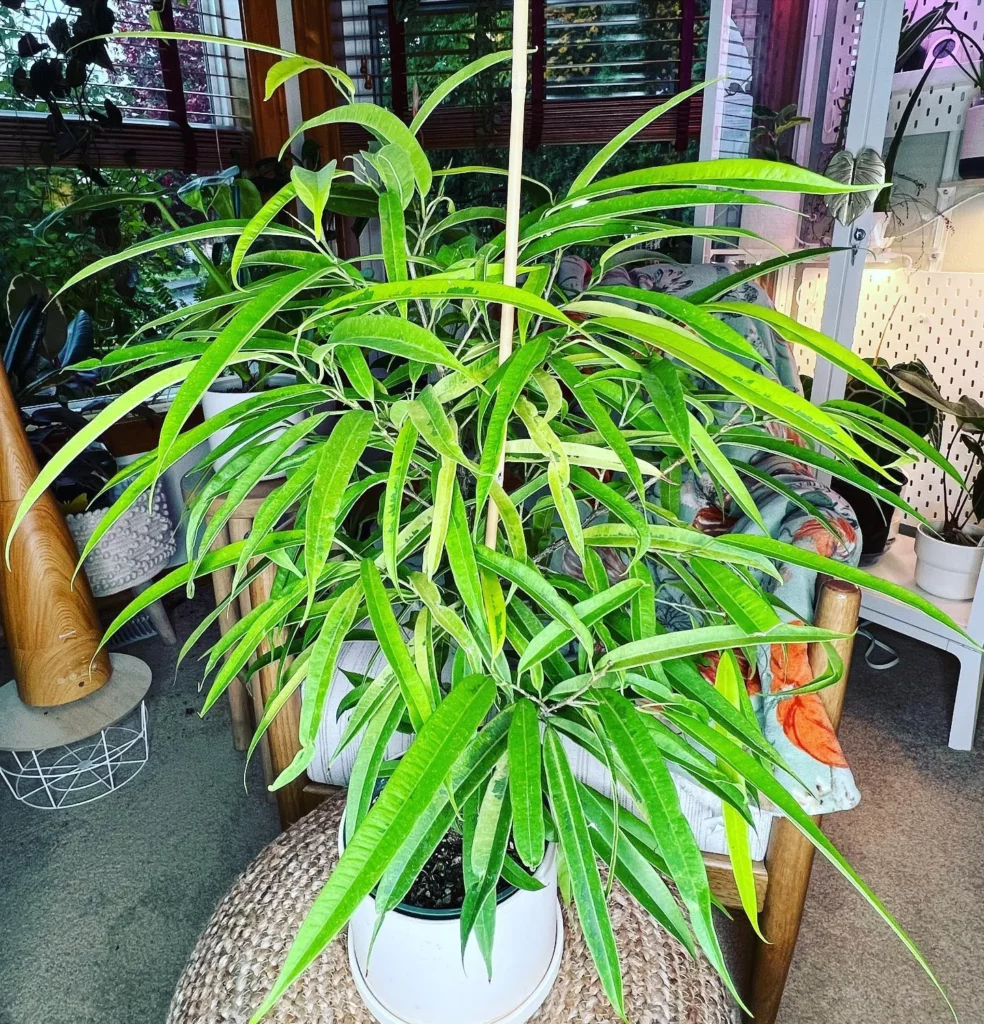
Providing the right temperature conditions is crucial for the well-being and overall health of Ficus sabre plants. These tropical houseplants thrive in temperatures that range between 55°F and 85°F (13°C-29°C).
It is important to keep the temperature within this range to ensure their optimal growth and development.
Extreme temperature fluctuations should be avoided, as they can cause stress and damage to the plant. Ficus sabre plants are sensitive to cold drafts, so it is best to keep them away from air conditioning units, open windows during winter, and doors that lead to the outside.
During the winter months, it is important to provide Ficus sabre plants with consistent temperatures. Avoid placing them near heating vents or radiators, as the dry heat can cause the plant to dry out and suffer.
If the indoor temperature drops significantly, consider using a plant heater or relocating the plant to a warmer area of the house.
On the other hand, during the summer months, it is important to protect Ficus sabre plants from direct sunlight and excessive heat. Too much direct sunlight can scorch their leaves, so it is best to place them in a location with bright indirect light or filtered sunlight.
If the temperature rises above their preferred range, consider providing some shade or relocating the plant to a cooler area.
Humidity Requirements for Ficus sabre Plants
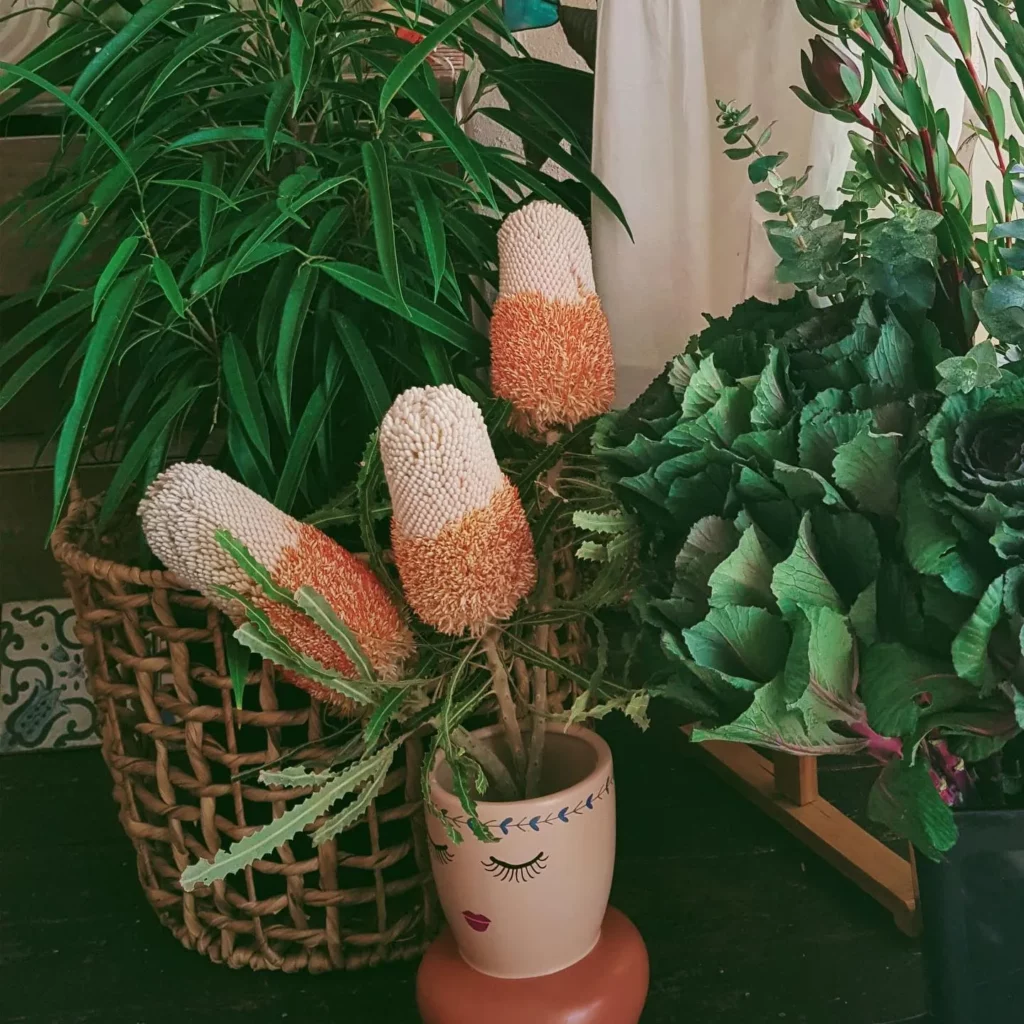
Creating the right humidity levels is crucial for the health and vitality of Ficus sabre plants. These tropical houseplants thrive in high humidity environments, simulating their natural habitat.
No products found.
Here are some tips on how to maintain the ideal humidity levels for your Ficus sabre:
- Grouping: Place your Ficus sabre plants together to create a microclimate with increased humidity. The plants will benefit from the moisture released through transpiration, providing them with the humidity they need.
- Humidifiers: Using a humidifier is an effective way to increase the humidity levels around your Ficus sabre plants. Set the humidifier to a moderate humidity level, ideally between 50% and 60%, to mimic their native tropical environment.
- Pebble Trays: Fill a shallow tray with water and place pebbles or stones in it. Set your Ficus sabre plant on top of the pebbles, ensuring that the water level is below the bottom of the pot. As the water evaporates, it will create a localized humid microclimate around the plant.
- Misting: Regularly misting the foliage of your Ficus sabre plants can help increase humidity levels. Use a spray bottle filled with room temperature water and mist the leaves, ensuring to cover both sides. Avoid misting too close to the soil to prevent overwatering.
Watering and Fertilizing Ficus sabre Plants
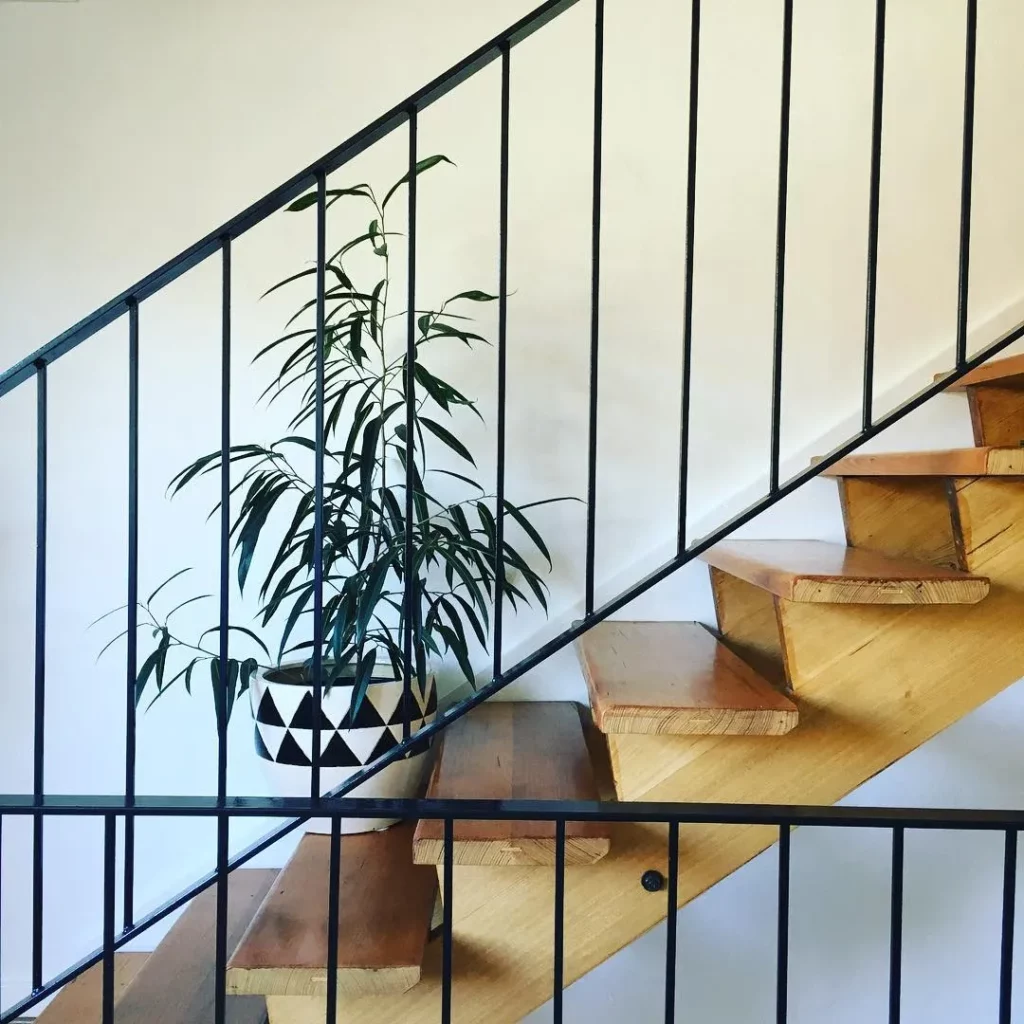
Proper watering and fertilizing are key factors in maintaining the health and vigor of your Ficus sabre plants. These houseplants have specific requirements that, when met, will help them thrive and flourish. Here are some essential tips:
Watering: Ficus sabre plants should be watered when the top 1-2 inches of soil have dried out. It’s important to avoid overwatering, as it can lead to root rot and other issues.
To ensure proper drainage, choose a planter with drainage holes or use a self-watering container. Remember to adjust your watering schedule based on the specific needs of your Ficus sabre plant.
Fertilizing: During the active growing season in late spring and summer, it is recommended to use a liquid feed or apply Osmocote to provide essential nutrients to your Ficus sabre plants.
Diluted fertilizer can be used monthly for fiddle-leaf figs. However, be cautious not to over-fertilize, as it can cause salt buildup in the soil. Follow the instructions on the fertilizer package and adjust the dosage according to the size and needs of your plant.
Pest Control for Ficus sabre Plants
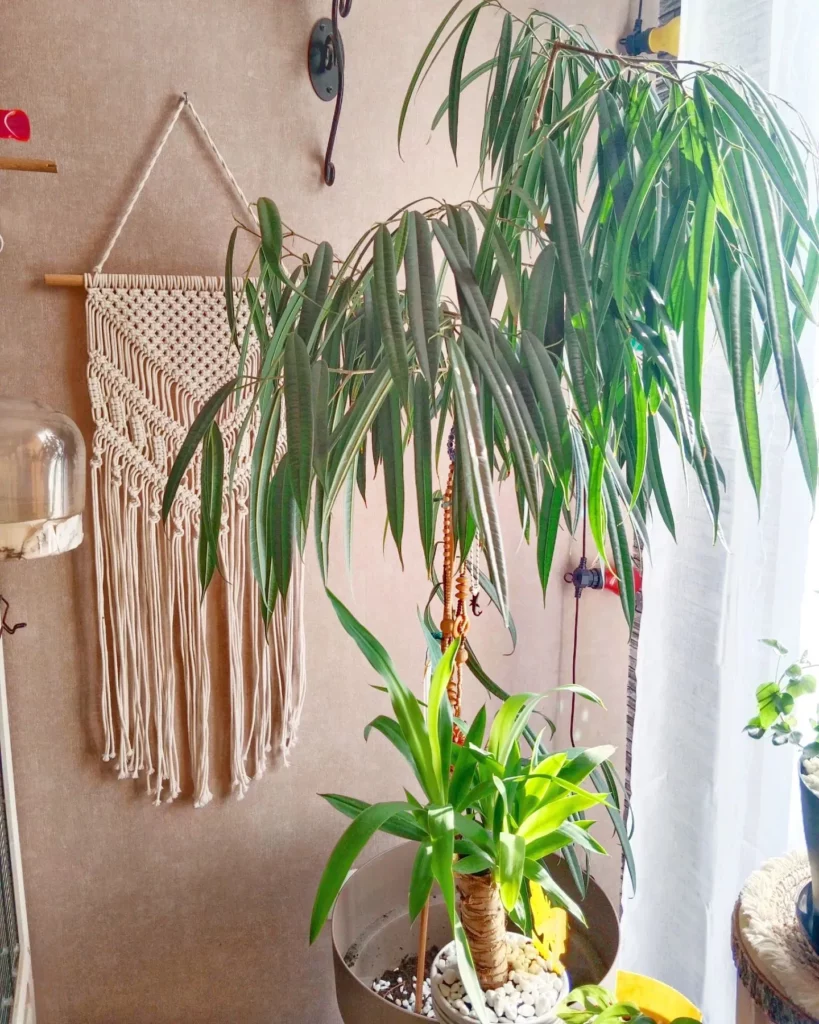
While Ficus sabre plants are generally resilient, they can occasionally fall prey to common pests that can hinder their growth. Here are some common problems to watch out for and tips on how to control them:
| Pest | Signs | Control |
|---|---|---|
| Scale Insects | Yellowing, Wilting, Stunted Growth | Remove manually or use horticultural oil/insecticidal soap |
| Spider Mites | Yellow Stippling, Webbing, Leaf Drop | Mist plant, use miticide/insecticidal soap |
| Mealybugs | White, Cottony Masses, Sticky Residue | Remove manually or use horticultural oil/insecticidal soap |
| Fungus Gnats | Small, Black Flies, Larvae feeding on roots | Dry out soil, use microbial insecticide |
Conclusion
By following the expert tips and guidelines outlined in this Ultimate Ficus sabre Care Guide, you can ensure that your Ficus sabre plants thrive and add beauty to your home for years to come.
Ficus sabre, also known as Ficus benjamina, Ficus maclellandii ‘Alii’, Ficus lyrata, and Ficus elastica, are popular houseplants that require minimal maintenance while providing a touch of tropical elegance to any space.
To keep your Ficus sabre plants healthy, it is important to provide them with the right conditions. They thrive in bright to moderate light, so placing them in a spot with adequate indirect sunlight is ideal. Rotate the plant weekly to promote even growth.
When it comes to watering, allow the top 1-2 inches of soil to dry before watering thoroughly. Overwatering can lead to root rot, so it is essential to ensure proper drainage either through drainage holes or by using self-watering containers.
In terms of temperature, Ficus sabre plants prefer a range between 55°F and 85°F.
Regular pruning and repotting are crucial for maintaining the size and shape of your Ficus sabre plants. Prune in early spring to remove any dead or damaged branches, and repot when it becomes difficult to water.
Keep an eye out for common pests such as mealy bugs, scale, and spider mites, and treat them promptly with appropriate pesticides.
By giving your Ficus sabre plants the attention they need and addressing their specific care requirements, you can enjoy the beauty and vibrancy of these stunning houseplants.
With a little effort and the right conditions, your Ficus sabre plants will flourish and bring a touch of the tropics into your home.
Make sure to check out our article on Ficus Retusa Care Guide. And after reading that Ficus article, check out our article on Ficus Trichopoda Care Guide.
FAQ
Q: What is the ideal light condition for Ficus sabre plants?
A: Ficus sabre plants prefer bright to moderate light. It is recommended to rotate the plant weekly to ensure even growth.
Q: How often should I water my Ficus sabre plant?
A: It is best to allow the top 1-2 inches of soil to dry before watering thoroughly. Avoid waterlogging the soil, as it can harm the roots. Repot the plant if waterlogging becomes a problem.
Q: How should I fertilize my Ficus sabre plant?
A: During active growth in late spring and summer, you can use a liquid feed or apply Osmocote. Diluted fertilizer can be used monthly for fiddle-leaf figs.
Q: What temperature range do Ficus sabre plants thrive in?
A: Ficus sabre plants thrive in temperatures between 55°F and 85°F.
Q: How often should I repot and prune my Ficus sabre plant?
A: Ficus plants do not mind being relatively pot-bound. Repot when it becomes difficult to water, checking and loosening coiled roots during the process. Prune regularly in early spring to maintain size and shape.
Q: What are common pests that can affect Ficus sabre plants?
A: Mealy bugs, scale, and spider mites can be problems for Ficus plants. Treat with houseplant-safe pesticides as needed.






